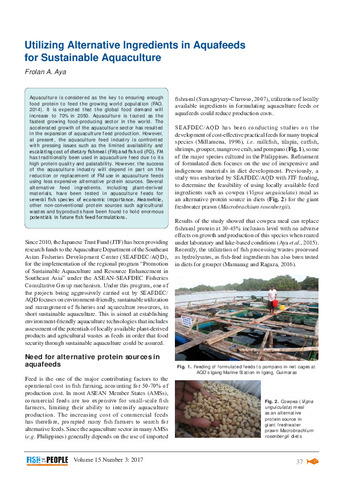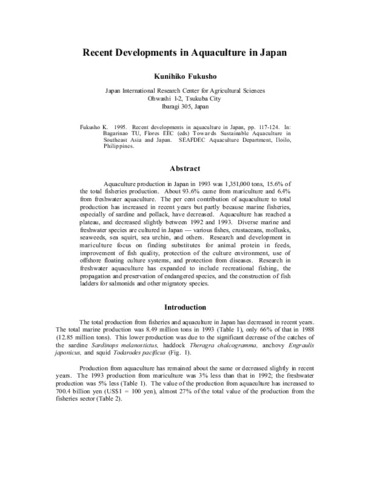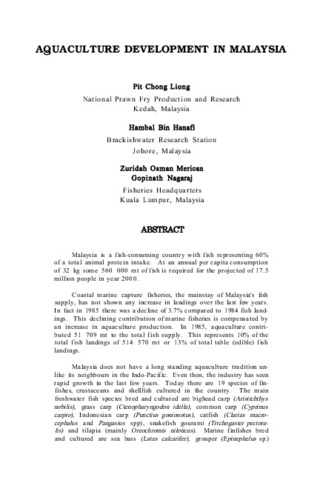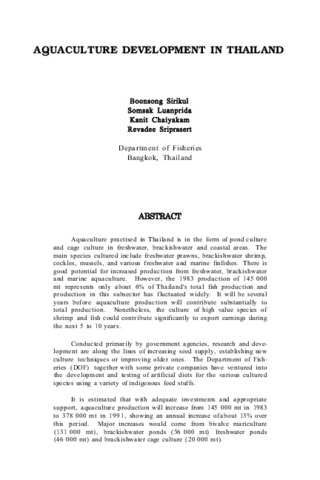Utilizing alternative ingredients in aquafeeds for sustainable aquaculture
Share
| dc.contributor.author | Aya, Frolan A. | |
| dc.date.accessioned | 2018-03-20T02:17:56Z | |
| dc.date.available | 2018-03-20T02:17:56Z | |
| dc.date.issued | 2017 | |
| dc.identifier.citation | Aya, F. A. (2017). Utilizing alternative ingredients in aquafeeds for sustainable aquaculture. Fish for the People, 15(3), 37-44. | en |
| dc.identifier.issn | 1685-6546 | |
| dc.identifier.uri | http://hdl.handle.net/20.500.12066/1291 | |
| dc.description.abstract | Aquaculture is considered as the key to ensuring enough food protein to feed the growing world population (FAO, 2014). It is expected that the global food demand will increase to 70% in 2050. Aquaculture is touted as the fastest growing food-producing sector in the world. The accelerated growth of the aquaculture sector has resulted in the expansion of aquaculture feed production. However, at present, the aquaculture feed industry is confronted with pressing issues such as the limited availability and escalating cost of dietary fishmeal (FM) and fish oil (FO). FM has traditionally been used in aquaculture feed due to its high protein quality and palatability. However, the success of the aquaculture industry will depend in part on the reduction or replacement of FM use in aquaculture feeds using less expensive alternative protein sources. Several alternative feed ingredients, including plant-derived materials, have been tested in aquaculture feeds for several fish species of economic importance. Meanwhile, other non-conventional protein sources such agricultural wastes and by-products have been found to hold enormous potentials in future fish feed formulations. | en |
| dc.language.iso | en | en |
| dc.publisher | Secretariat, Southeast Asian Fisheries Development Center | en |
| dc.subject | South East Asia | en |
| dc.title | Utilizing alternative ingredients in aquafeeds for sustainable aquaculture | en |
| dc.type | magazineArticle | en |
| dc.citation.volume | 15 | |
| dc.citation.issue | 3 | |
| dc.citation.spage | 37 | |
| dc.citation.epage | 44 | |
| dc.citation.journalTitle | Fish for the People | en |
| dc.subject.asfa | food | en |
| dc.subject.asfa | feeds | en |
| dc.subject.asfa | proteins | en |
| dc.subject.asfa | fish | en |
| dc.subject.asfa | Byproducts | en |
| dc.subject.asfa | feed composition | en |
| dc.subject.asfa | fish culture | en |
| dc.subject.asfa | aquaculture | en |
| dc.subject.asfa | palatability | en |
| dc.subject.asfa | Fish meal | en |
| dc.subject.asfa | fish oils | en |
| dc.subject.asfa | Agricultural wastes | en |
| dc.subject.asfa | sustainable aquaculture | en |




